Both chefs and family cooks are only now learning of the multitude of benefits which can be obtained from microgreens.
Perhaps the most beneficial aspect of microgreens is that they are packed with nutrients, vitamins and other healthy ingredients which are good for your health, making it far easier to eat your recommended daily quotas.
It is long overdue that microgreens have come to the attention of the culinary world for their nutritional properties. For far too long they have only been used as garnish or perhaps to add flavor to vinaigrette. Whilst their use as such may have added color or taste, their nutritional value was rarely considered or taken advantage of.
Today this is changing as more and more people are starting to pay attention to their bodies and the nutrition they need for a healthy whilst busy lifestyle. As the number of fast-food restaurants increases, so does the number of people suffering from obesity and the health problems it promotes.
This added attention to healthy eating has led some foods to be classed as superfoods, foods that provide high levels of nutrition. Some microgreens have already been included in the lists of superfoods but there is a case to add more as each individual type of microgreens possesses an abundance of one vitamin, mineral, or nutrient, always more nutritious than their bigger, more fully grown namesakes.
General Nutritional and Health Benefits of Microgreens
Although each type of microgreens has its own benefits, in general, microgreens are renowned for:
Microgreens Contain Polyphenols
Polyphenols are antioxidant compounds that are known to relieve the build-up of free radicals in your body. Free radicals are molecules or atoms which can inflict damage on cells and therefore sometimes lead to chronic disease.
Microgreens Are High In Nutrients
Most vegetables are well-known for containing high amounts of nutrients and vitamins, especially Vitamins A, C and K as well as other beneficial properties such as high levels of manganese and folate.
- Manganese is essential for normal brain functions. Although the body does store small amounts of manganese in its vital organs, additional amounts are required via your diet.
- Folate is a vitamin B needed in the production of red and white blood cells and the conversion of carbohydrates into energy. This is especially essential for rapid body growth and so is extra important during pregnancy, for infants, and for young children.
Microgreens contain the same nutrients as their fully grown vegetable and often as much as 4 to 40 times more (by weight). This is due to them being harvested young whilst they still contain the added nutrients needed for the growth and flowering of the adult plant.
Microgreens Improve Your Heart Health
Microgreens, like vegetables, are known to help keep the heart healthy. Although neither vegetables nor microgreens are a fix-all solution to a healthy heart on their own, as part of a healthy diet and lifestyle, they certainly can play a major role.
Microgreens Reduce Chronic Disease Risk
Microgreens are known to be able to help reduce inflammation and are widely thought to be able to assist in lowering the risk of several different types of cancer. Microgreens have also been associated with lowering obesity and the risk of type 2 diabetes.
Microgreens Are Easy and Convenient
As mentioned, microgreens are harvested young, when their stems are only about 2 or 3 inches high and they have their first leaves. This means that they are compact and easy to use requiring no peeling or cutting. As microgreens are ready to harvest so young they only require 3 to 4 weeks of growth from planting the seeds to harvesting. For convenience, as microgreens are so quick and easy to grow, many people are starting to grow their favorites in trays on their windowsills at home.
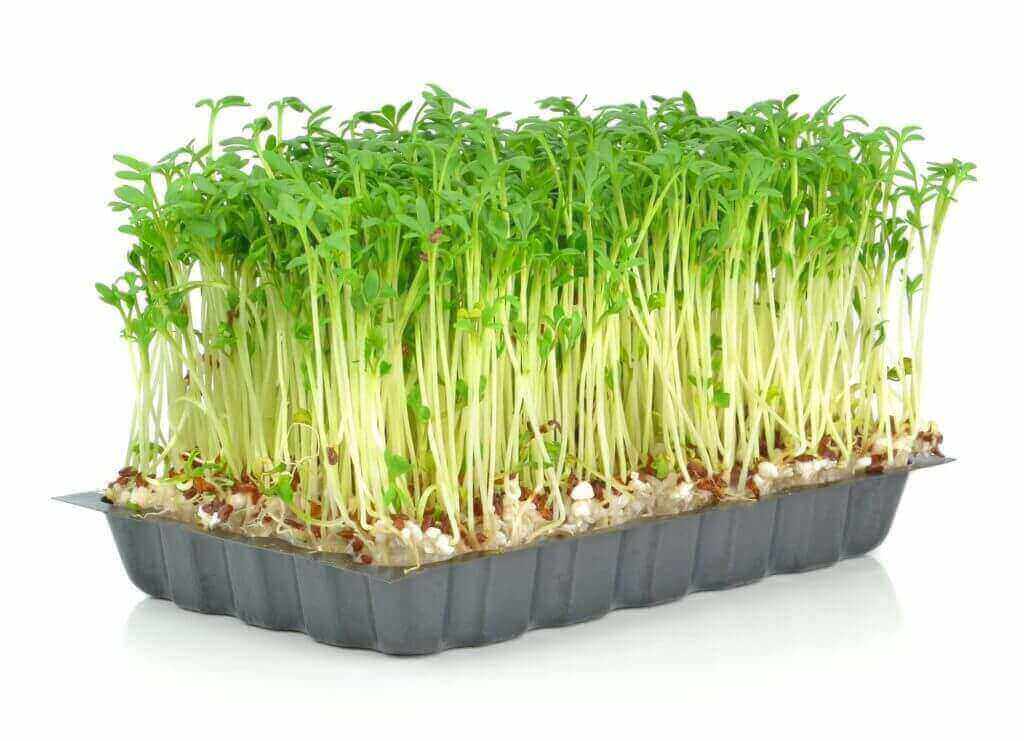
What Are Microgreens?
Microgreens are very young plants, usually vegetables but not exclusively as some types of flower are also grown as microgreens. Although they are sometimes referred to as vegetable confetti or micro herbs they are distinctly different from what are known as baby greens or sprouts.
Benefits of Microgreens vs. Sprouts
Microgreens are harvested somewhere between 7 and 21 days when their first leaves have grown but before their second set of leaves appear. This means that microgreens consist of both stem and leaves.
Sprouts are harvested much earlier, somewhere between just 2 to 7 days, before they have had an opportunity to grow leaves and so these consist of just the stems. Seeds for growing sprouts are generally grown in just water but whilst the seeds for microgreens can be, usually, they are planted in soil and watered.
Microgreens vs. Baby Greens
Although both microgreens and baby greens consist of both stems and leaves, microgreens only have their stem and the first set of leaves as they are harvested earlier than baby greens which are just smaller versions of the adult vegetable, looking and tasting the same.
Perhaps the biggest difference between microgreens and baby greens is that whilst baby greens are smaller than the fully-grown vegetable they still have to be harvested before selling. However, due to their immaturity microgreens may be sold in their trays and harvested by their buyer.
Even though microgreens are small, due to their exceptional nutritional value, scientists consider them to be a functioning food source, with some even referring to them as the new superfood. As well as adding nutritional value to a meal, microgreens can also improve the flavor and texture of a meal, plus in some instances color.
Taste – Most microgreens have a similar taste to their fully grown counterparts but due to their size they can more adeptly and diversely be included into many meals either hot or cold and can even be whipped into a smoothie.
Texture – Many of the microgreen varieties are crispy and so they can add a delightful and nutritional crunch to a sandwich or salad. Some microgreens however, like amaranth, are soft and therefore not crunchy however, in the case of amaranth at least, they can add color and so are often used in egg dishes.
Microgreens Allow You To Eat The Rainbow – Some of the microgreens have distinct coloring and so, besides adding nutrition to a meal they can also brighten a meal, perhaps make it look more appealing.
Microgreens have been used for decades but up until the 1980s they had usually only been used in a vinaigrette or as garnish by restaurant chefs. Since the 1980s however, their nutritional value has been recognized and they have steadily become increasing popular for adding nutrition to a meal, not just by chefs but also by regular households.
Benefits of Microgreens – Freshness
Although microgreens are packed with nutritional value, in order to make full use of their nutritional potential they should be eaten fresh.
Microgreens will generally only retain their full nutritional potential for a day after harvesting, after which time these nutritional values start to wane and so are less beneficial even if their taste may linger longer. To this end, it is essential that microgreens are eaten as soon as possible after harvesting.
The requirement of microgreens being fresh has perhaps attributed to them not being so widely seen or available on market stalls. However, to ensure their freshness and perhaps to add an extra income, many households are growing their own microgreens. The extra income is due to some growing more than they will use in order to offer them to market stalls and chefs in the local restaurants. This is increasing the availability of genuinely fresh microgreens throughout the country.
Microgreens Are Easy To Grow
The main reason so many people are starting to grow microgreens, either for their own use or to sell locally, is that they are so quick and easy to grow.
Unlike the fully grown vegetables which you need to sow in a field, microgreens are grown in trays. Although almost any tray can be adapted to use for growing microgreens, usually specially designed trays measuring 20” x 10” are used. Of course some people opt to grow them the same way as they would sprouts, just in water but growing microgreens without soil can increase the chances of them acquiring mold, which they are susceptible to.
Also growing microgreens without soil hampers their growth as their roots cannot access additional nutrients that are present in the soil. This means that microgreens grown just in water and without soil take longer to grow and many of the seeds may not even germinate.
There are literally hundreds of different types of microgreens and although they all grow in a similar manner, each may have specific requirements from others. Some may need additional light or heat whilst for others those may not be as important. Some microgreen seeds may need to be covered with a thin layer of soil whilst others may just need to be placed on top of a bed of soil. Depending on the length of the roots, some seeds may need to be placed on a deeper bed of soil than others.
In general, ignoring the sometimes special requirements of certain microgreen seeds, they are placed on a bed of soil inside a growing tray. The soil should be moistened but not too much as that could encourage mold to form. Once the seeds have germinated and stems have begun to appear, the tray should be placed in sunlight so the microgreens can draw energy from the light in order to assist their growth.
One of the benefits of microgreens is that they can be grown inside or outside. Although most people may grow their microgreens outside, many of them grow them inside, perhaps placing them on windowsills. If the weather is particular cold or there is poor light, you may need to use growing lamps and in some instances for microgreens which need a minimal heat in order to grow, a heater.
It will usually be about 2 or 3 days before the seeds germinate and so on about the 3rd or 4th day they should have access to light for several hours per day and should be watered as required. Some people opt to use a water tray beneath the growing tray as by doing so they just need to ensure the water tray has water and thereby avoid risking the microgreens catching mold due to their stems and leaves becoming wet. When a water tray is used in collaboration with a growing tray, the microgreens are able to receive sufficient water as and when they need it via their roots.
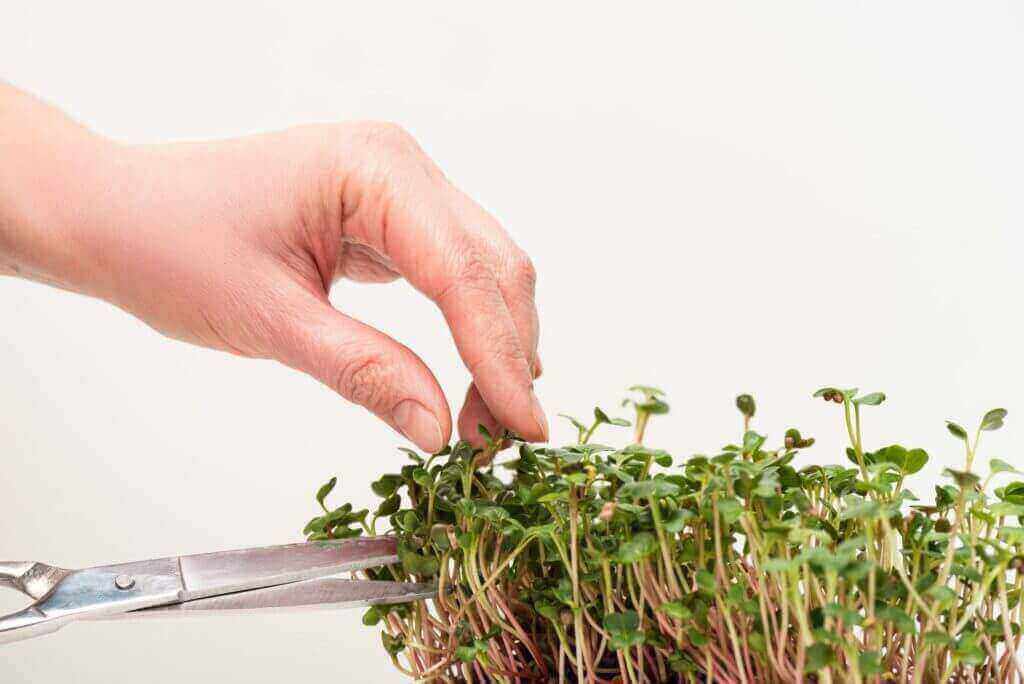
Harvesting Microgreens
Another benefits of microgreens is that when it is time to harvest your microgreens, all you will need is a clean pair of scissors, cutting the stems close to the soil.
At some point, usually somewhere between 14 and 21 days, the microgreens will develop their first leaves and it is at this point that they are ready to be harvested. Although you must wait for the first leaves to grow, you must harvest them before the second set of leaves appear. As it is essential for microgreens to be eaten fresh in order to obtain their full nutritional value, you should try to only harvest as much as you need for that particular day.
As freshness is so essential, many growers will sell their microgreens in their growing trays, allowing the buyer to harvest them as they are needed. It is possible to place any excess microgreens harvested in a refrigerator but, if you do this you should ensure that they are placed in a plastic bag which has slits in it, and they should only be stored in this manner for as short a period as possible and certainly no longer than just a couple of days or most of their nutrients will be lost.
Starting a Microgreens Business
Many people, usually after having grown microgreens for their own consumption, start a business growing them for others. Having grown microgreens for your own use and seen how easy they are to grow, growing them for others is a natural next step.
Those who have started their own microgreens businesses were encouraged by the fact that the capital needed to set up the business is minimal, and that a start of a return can be found on your initial investment in just a short period. Some microgreen businesses have been able to set up with just an initial outlay of $600 and then start to sell their microgreens within a month.
The initial cost will of course include trays soil and seeds which will become a recurring cost but the ‘one off’ cost will be the setting up of an area, either outside or in, large enough to make it a viable, profitable business. This is just an initial cost as new trays will take up the places which old trays leave and so any additional areas will only be for the expansion of the business.
If you are considering starting up your own microgreens business though, there are certain factors that you will have to consider and these will take some research prior to any financial investment.
In order for the business to be profitable, you have to know you can sell the microgreens you grow and so only grow the types of microgreens which you know will have a customer base in your area. To ascertain this information your research should probably include asking local vegetable vendors at your market place as, although they may not currently sell microgreens as they cannot acquire them fresh, they have probably been increasingly asked if they sell different types and so therefore they may know which types may have a profitable potential. Also you should visit local restaurants and other eating establishments to ask the chefs which microgreens they would be interested in if they could get them fresh.
Potential Profit from a Microgreens Business
The profits from a microgreens business may of course differ, depending on the amount of trays you grow and harvest, which types you grow and of course how much of your harvest you are able to sell. There is however the potential to make a good profit as, once you have paid your initial set-up costs, the average cost for one tray, soil and seeds is between $2 and $3 whilst the average selling price of a tray of microgreens is between $25 and $30.
Although this is an average, most types of microgreens will fall within this range but there are some microgreens whose seeds are very expensive and so they will have a much higher but equally profitable selling price.
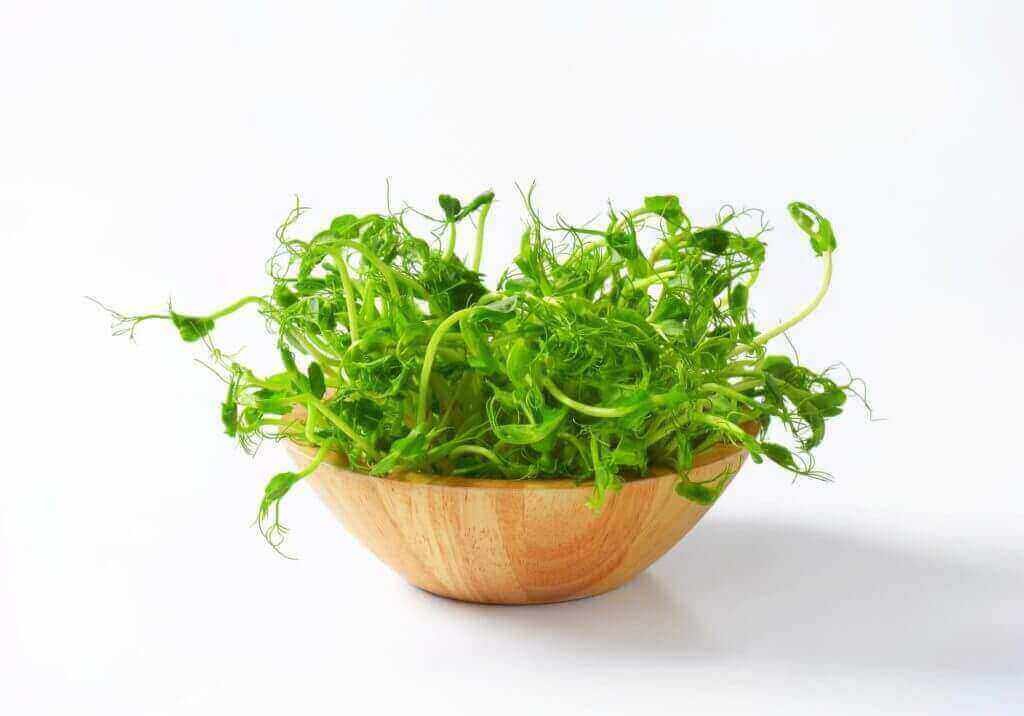
Nutritional Benefits of Microgreens – Individual Types of Microgreens
Most Common/Popular Microgreens Varieties
From the hundreds of different types of microgreens that are available, some have emerged as being more popular than others and these include:
Arugula – This is a type of microgreen which is particularly known for assisting in the maintenance of strong and healthy bones. This is a leafy vegetable (sometimes referred to as rocket) which has more vitamins, phytochemicals, and antioxidants than lettuce whilst also having a calcium level equal to spinach. However, this is often considered more beneficial than spinach as it contains fewer oxalates which are known to block the body from absorbing calcium. Also Arugula’s high levels of vitamin K help in maintaining bone health. This microgreen’s high levels of antioxidants can also assist in reducing stomach acidity and ulcers.
Radish – The many different varieties of this microgreen include red arrow, triton, sango, and Japanese daikon but all have the same spicy flavor associated with fully grown radish. Some people say these microgreens can help add fullness to a meal but whether that is true or not, they certainly have an abundance of vitamins and nutrients including high levels of vitamin C and also protein. Whilst popular, fortunately, radish microgreens are among the easiest to grow and are one of the fastest to grow, reaching harvest just 12 days from planting the seed.
Sunflower – Along with radish these are perhaps the most popular and commonly seen microgreens. Providing a sweet nutty flavor, these microgreens are also high in nutrients, vitamins and minerals, especially vitamin B and zinc.
Beetroot – Known in the States as just beets, beetroots are mainly eaten for their roots but microgreen beetroots can be equally nutritious, in fact, more nutritious and have more iron than spinach. Microgreen beetroots are perhaps one of the microgreens you may already see on market stalls around the country but remember, if you are buying some for their nutrition, don’t forget to enquire how fresh they are.
Kale – Due to the fully grown kale being packed with vitamin C which is good for maintaining your immune system, it has already been considered a superfood by many. Kale microgreens have the same nutritional qualities plus many think they are nicer to eat than the leaves of the larger kale.
Broccoli – As a vegetable, broccoli is already very popular both for its taste and its nutritional potential. Broccoli has the highest amount of sulforaphane than any other vegetable and the same can be said about broccoli microgreens. Although many of the nutritional qualities in microgreens have yet to be proven, sulforaphane has been proven to help alleviate chronic inflammation and assist in preventing cancers. It is also known to protect against strokes and cardiovascular diseases. Sulforaphane can however lose its potential when excessively heated and so this is perhaps one type of microgreen that should be eaten raw, although most types can.
Parsley – Thought often as only a garnish by many, parsley and parsley microgreens have their own health benefits. Parsley is high in lutein and zeaxanthin which are good for the eyes and maintaining good eyesight.
Chives – Closely related to onions and garlic, chive microgreens have a bit of an oniony taste but they can help your heart’s health by lowering bad cholesterol in the blood due to them containing a compound called allicin.
Mint – Although mint is often only used to add flavor to cocktails, mint microgreens can assist in relieving indigestion and also help improve brain functions.
Dill – Dill microgreens are known to act as a sedative but they can also assist in reducing menstrual pains.
Fennel – Fennel microgreens are particularly beneficial to bodybuilders and others who indulge in strenuous exercise and this is because it has nine amino acids which are essential for rebuilding and repairing muscles.
Watercress – This is an amazing microgreen as it contains more vitamin C than oranges, more calcium than milk, more folate than bananas and more iron than spinach.
Some of the less popular or less well-known microgreens can also have health benefits, such as:
Cilantro – Packed with vitamin A cilantro microgreens can assist in removing unwanted heavy metals from the body and also help in balancing sugar levels in the blood.
Mustard – As with the many types of mustard, mustard microgreens have a high antioxidant level which is good for detoxicating the blood and liver, they are also a good source of fiber.
Orach – Like the ancient adult vegetable, orach microgreens are known for improving kidney function and digestion but as they have high levels of oxalic acid, people who are prone to kidney stones should perhaps avoid them.
Celery – These microgreens have the distinct celery taste and are rich in minerals and vitamins but low in sodium and they will not give your blood sugar level a hike.
Amaranth – These are microgreens of a vegetable that is now known to have made up 80% of the ancient Aztecs meals and contain 30% more protein than rice. Easy to digest, amaranth microgreens also contain many other beneficial ingredients that can help fight osteoporosis and various types of cancer, improve eyesight and assist in reducing hair loss.
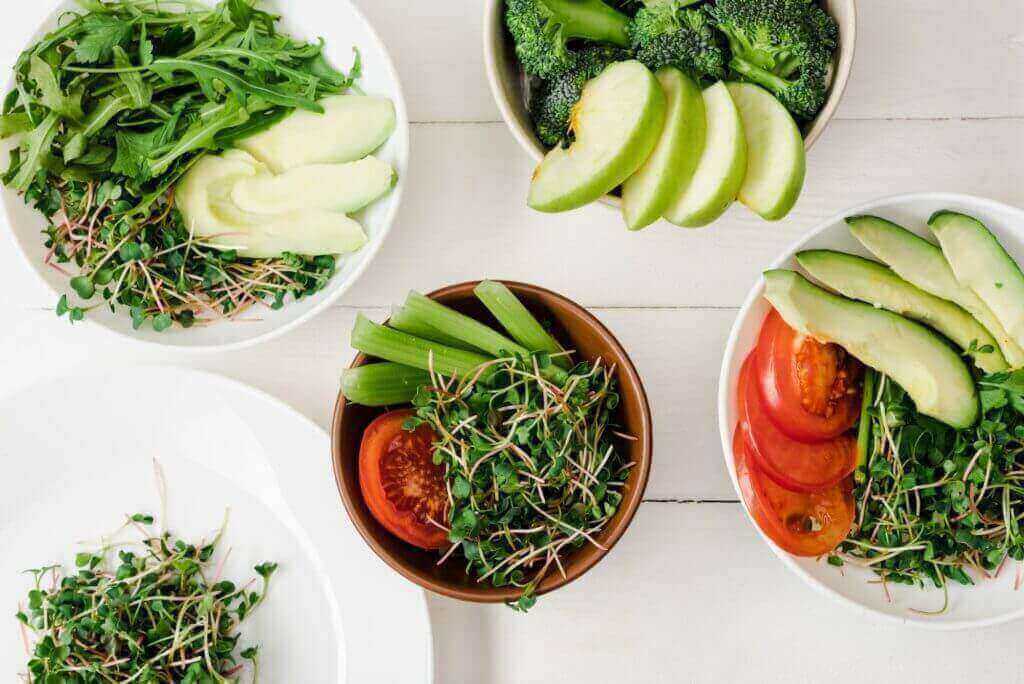
What Microgreens Should You Eat?
As with any food you want to eat for its nutritional properties and so eat it regularly, you should choose a microgreen variety that you like the flavor of. With so many to choose from you may even want to try some of the more exotic vegetable types you have only heard of. As many of the microgreen varieties have distinct colors they may even be able to entice some of the younger members of the family to try them.
Of course, if you grow your own you will have a wide variety of choices of seeds and can buy them wholesale from Todd’s Seeds. If however, you are not planning to grow your own it would also be wise to decide on a variety which you know you can purchase fresh in your vicinity.
Benefits of Microgreens – Summary
Microgreens can come from almost any type of plant and are somewhere midway between sprouts and baby vegetables. The many different types of microgreens can have a diversity of colors and textures but will usually have a very strong taste compatible with their fully grown counter parts.
Due to their compact size microgreens are packed with nutrients, more than the fully grown variety which would have used much of the nutrients in order to gain its extra size and flower. Microgreens have many known health benefits and so are ideal for including in many different meals in order to make them more nutritious whilst hopefully, improving the taste of the meal.
Microgreens are generally considered as being a safe source of vitamins and nutrition however, the quality of the seeds and the type of soil used can determine how safe they are so if you decide to grow your own, use quality seeds provided by Todd’s Seeds and only use a growing medium recommended by them.
Microgreens are exceptionally easy to grow and can be harvested within just a couple of weeks from the time you sow the seeds. This makes them ideal for growing at home for your own use or as a reasonably cheap and easy business opportunity. With minimum starting capital and a fairly quick turnover of produce, many people have opened businesses catering to the needs of their local communities and in doing so, not only assist in maintaining the health of the community but also making a profit from doing so.
Whilst all microgreens are full of nutrition, different varieties possess different beneficial qualities and so there is likely to be at least one which can provide you with any specific vitamins or nutrients you feel you may be in need of.
Most microgreens are able to be eaten raw or even blended to make a nutritional drink to accompany a meal. When added to a meal they do not only add nutrition but often add color and a crispy texture, making them excellent for sandwiches or salads. The less crispy varieties are also not without their color and can make exotic additions to any egg dish.
Conclusion
Until now microgreens may not have been taken seriously as a substantial, beneficial food source but that has been to our detriment which has started to change for the better. As more people grow their own microgreens and extras to sell within their local communities, we will all be able to benefit from these nutritionally packed mini vegetables.
With a source of fresh microgreens readily available we will not only be able to eat healthier but also add diversity to our otherwise, sometimes mundane diets. As the scientists discover an increasing number of healthy benefits microgreens can offer, chefs are just as busy discovering more meals they can be added to in order to offer more nutritious meals.
Microgreens, by their nature, are of course relatively small however, ounce for ounce they are possibly one of the most beneficial foods available today. With hundreds of different types to choose from meals no longer need to seem repetitive in order to be nutritious, plus of course they can add color to an otherwise drab looking meal.
As the nutritional properties of microgreens are only recently being acknowledged, supplies of truly fresh produce are still too few and far between and so as an additional benefit, many people are able to benefit financially by buying seeds and growing microgreens to selling them locally.
You can also watch the video version of this article below.
Subscribe to our channel for more gardening and sprouting videos: Todd’s Seeds Youtube Channel

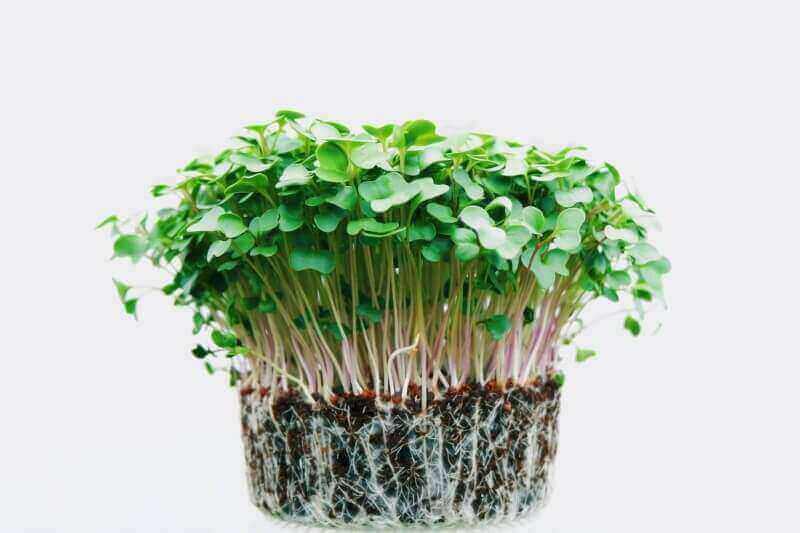
You must be logged in to post a comment.